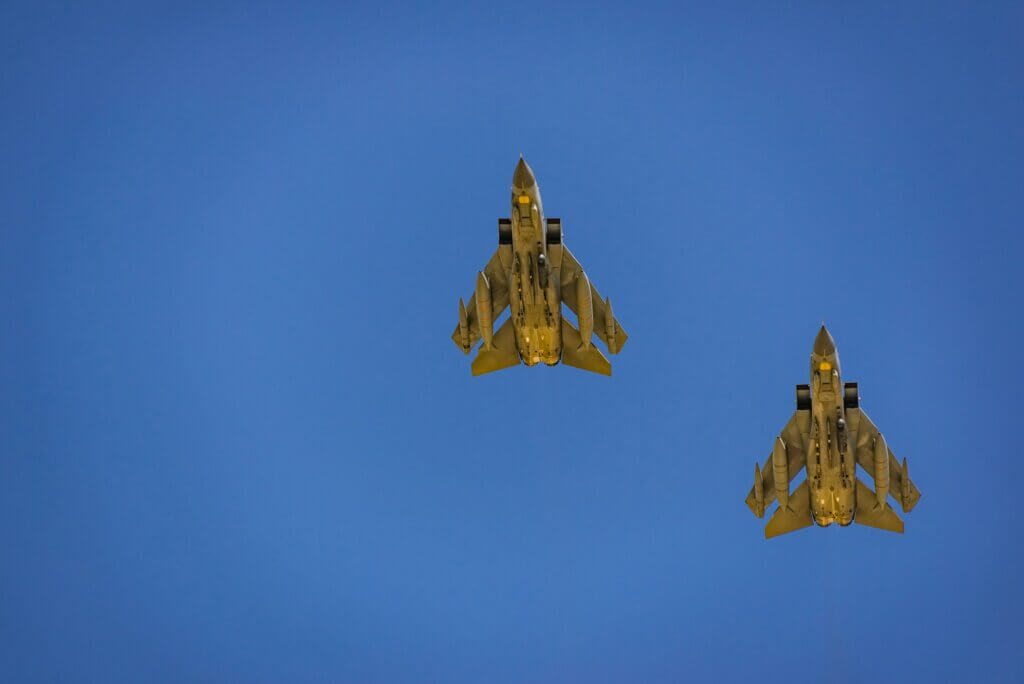We may earn money or products from the companies mentioned in this post.

Cutting-Edge Military Laser Tech
In an era where the digitization of warfare and the rise of unconventional threats loom large, laser technology emerges as a pivotal element in modern military arsenals. At the forefront of this technological revolution are high-energy laser weapons, remarkable for their precision and the strategic advantage they offer against agile targets such as drones, missiles, and aircraft.
As we delve into the intricate landscape of these advanced systems, we embark on a journey through the development and deployment dynamics that define the current state and the transformative potential of laser-induced combat scenarios. Beyond the mere mechanics, we tackle the strategies encompassing laser defense countermeasures, the grapple with the formidable challenges directed energy systems face, and wrestle with the profound ethical and legal implications that come part and parcel with such disruptive capabilities.
High-Energy Laser Weapons
Emerging Laser Defense Technologies Transform Military Capabilities
In the arena of modern warfare, high-energy lasers (HELs) are carving out a transformative role in defense systems, representing a quantum leap in both strategic and tactical capabilities. These systems offer a suite of advantages that traditional weaponry cannot match, including the ability to strike with unprecedented speed and precision. Operating at the speed of light, high-energy lasers can intercept a variety of threats, such as unmanned aerial vehicles (UAVs), artillery shells, and even incoming missiles, effectively acting as a near-instantaneous defensive shield.
The underlying principle of these systems hinges on their capacity to deliver concentrated beams of light, which, through the process of rapid heating and incineration, neutralize potential threats. Recent advancements in laser technology have significantly boosted power output, enabling longer range and more effective targeting. Moreover, the precision of HELs ensures minimal collateral damage, a critical consideration in contemporary conflict zones.
Cost-effectiveness further accentuates the appeal of laser systems in defense. Unlike conventional armament, which requires munitions stockpiling, the use of lasers circumvents logistical burdens — a single system can persistently defend against multiple threats as long as it has power. This efficiency eliminates the need for extensive reloads and reduces the risk of ammunition depletion during protracted engagements. As military entities worldwide continue to integrate these laser systems into their arsenals, the future of defense appears not just brighter, but decidedly laser-focused.

Laser Defense Countermeasures
In the evolving landscape of modern warfare, the rise of high-energy laser weapons has prompted the development of countermeasures to protect against these potent systems. As nations incorporate laser technology into their military arsenals, the need for effective defense strategies becomes paramount to maintain a balanced combat environment. Research into counter-laser initiatives has yielded several methods to safeguard personnel and assets from the high-precision threat that lasers pose.
A primary approach to counteracting lasers involves the use of ablative materials. These specially engineered substances are designed to absorb and dissipate the immense heat generated by a laser strike, effectively diffusing the laser’s energy before it can inflict damage. Additionally, smoke screens can be deployed to scatter and absorb laser beams, curtailing their efficacy over a battlefield. These obscurant methods are particularly useful in protecting larger areas or fixed installations.
Another line of defense hinges on the application of reflective coatings. These coatings are applied to critical assets, reflecting the laser’s light and vastly reducing the energy that makes contact with the surface of the target. This technique is essential for protecting high-value equipment and vehicles, although its utility may be limited by the need for precise application and potential vulnerability to various wavelengths used by multiple laser systems. Furthermore, advances in adaptive optics allow for the dynamic adjustment of reflective properties, potentially neutralizing a broader spectrum of laser threats in real-time scenarios. These countermeasures collectively signify a comprehensive effort to develop resilience against the emerging threat that laser weapons represent in modern combat.

Directed Energy System Challenges
Directed energy systems, particularly high-energy lasers (HELs), offer transformative defense capabilities; however, they are confronted with several technical challenges that must be surmounted. One significant hurdle lies in beam control and propagation. Since lasers rely on coherent light, maintaining beam quality over extended distances in varied atmospheric conditions is critical. Atmospheric turbulence can deflect and distort the laser beam, diminishing its effectiveness. Adaptive optics and phase-conjugate mirrors are technologies being explored to correct wavefront distortions in real-time, ensuring the laser maintains its focus and potency when reaching a distant target.
Thermal management is another area that poses considerable technical challenges. High-energy lasers generate substantial heat during operation, and without effective cooling systems, this can lead to overheating, degrading performance, and potentially causing damage to system components. Advanced cooling techniques, such as liquid circulation systems, are imperative to dissipate heat away from critical elements swiftly. This not only maintains the integrity of the laser but also ensures consistent, reliable operation during prolonged engagements.
Power supply and efficiency are further areas of concern. HELs require robust power sources to generate the high levels of energy needed for beam generation. The balance between size, weight, and power (SWaP) constraints and the need for a potent power supply is a delicate one. Addressing this requires innovation in compact, high-density energy storage and conversion technologies to feasibly integrate them into mobile platforms without severely impacting maneuverability or operational range. As directed energy systems continue to evolve, overcoming these technical obstacles is paramount to fully realizing their groundbreaking potential in defense applications.
Ethical and Legal Implications
Military laser tech, while demonstrating a multitude of tactical advantages, raise important ethical and legal concerns that must be carefully examined. The potential for these high-energy lasers (HELs) to cause irreversible harm to personnel is one of the foremost ethical dilemmas. International law, under protocols like the Geneva Convention, mandates the avoidance of unnecessary suffering in combat; however, lasers that can blind or maim combatants may contravene such stipulations.
Debates continue on whether certain uses of these lasers constitute a breach of the laws of armed conflict, particularly with respect to the intentional blinding of enemy forces, which has been outright banned under the Protocol on Blinding Laser Weapons (Protocol IV to the 1980 Convention on Certain Conventional Weapons).
Military Laser Tech: Legal Standpoint
From a legal standpoint, the deployment of military lasers also encounters challenges around weapon classification and the laws of warfare. Since HELs do not fit neatly into conventional weapon categories, ambiguities arise in the application of existing arms control agreements. Furthermore, the use of lasers in space, for instance, opens up a complex legal area governed by international treaties such as the Outer Space Treaty of 1967, which restricts the placement of nuclear weapons and other weapons of mass destruction in orbit. The adaptation of laws to include newer technologies like lasers remains a pressing necessity, ensuring that their deployment aligns with international standards.
In considering the operational integration of lasers in military engagements, it becomes imperative to address these ethical and legal issues with the same vigor dedicated to technological advancements. As defense systems globally continue to evolve, ongoing dialogue and regulation development must be prioritized to align these powerful capabilities with the overarching principles of humanitarian law and warfare ethics, safeguarding against the misuse of such formidable technology.

The advent of military laser tech beckons a new chapter in the landscape of warfare, simultaneously opening doors to unparalleled defense mechanisms and exposing vulnerabilities that could reshape strategic doctrines. As the horizon of laser capabilities continues to expand, the onus lies on policymakers, military strategists, and international bodies to navigate the multifaceted ramifications with due diligence. Navigating the complex tapestry of technological evolution, moral conundrums, and regulatory frameworks, we must charter a course that balances the imperatives of national security with the tenets of international harmony and ethical warfare. With each beam of coherent light, the future of military engagements is being rewritten, demanding vigilant oversight and adaptive tactics to ensure peace and stability in an increasingly laser-illuminated world.
You Might Also Like – Ethics of New Technology

